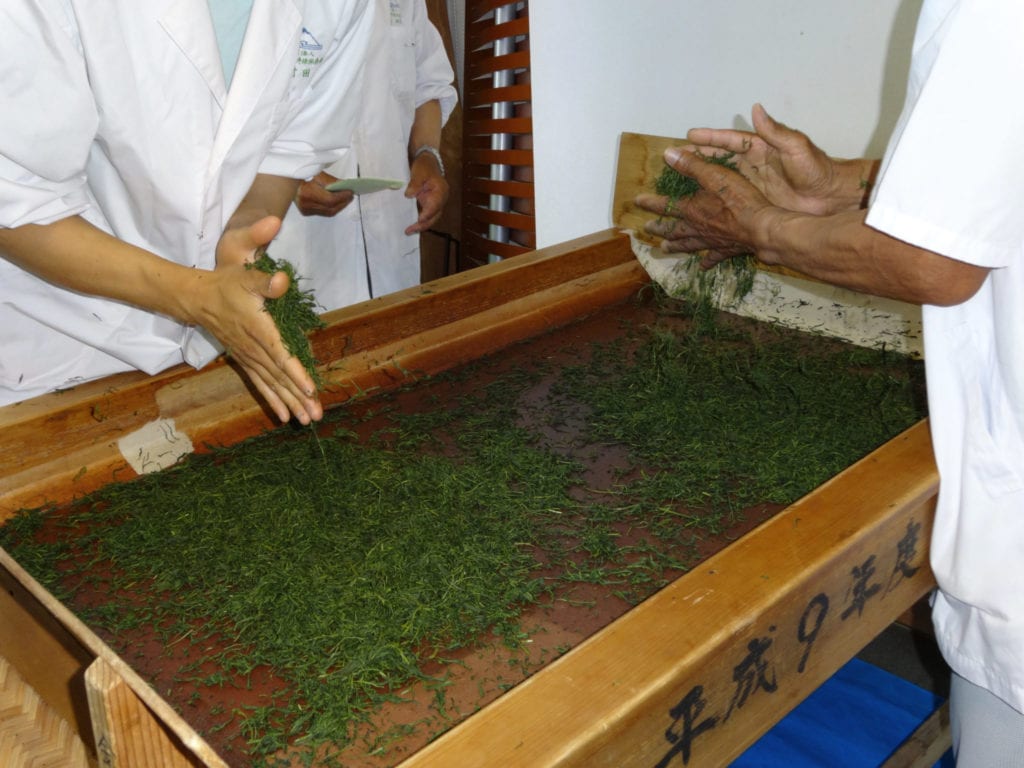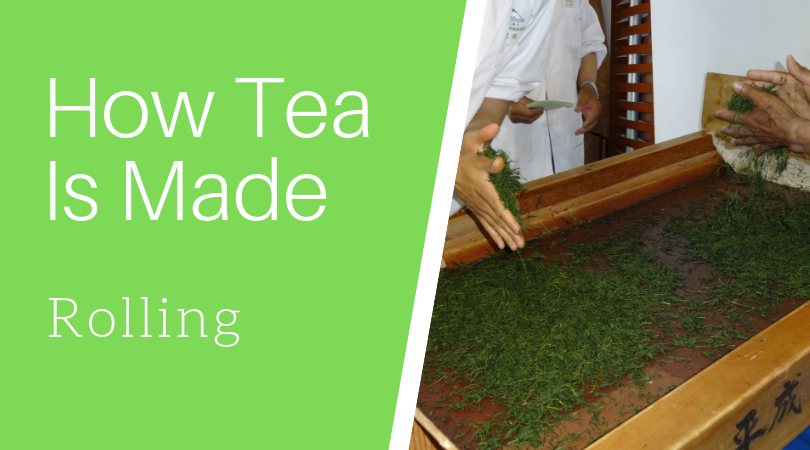This is the third post in a series where I will be breaking down each of the steps that tea undergoes, from leaf to cup. Check out last week’s post to learn about how tea is withered.
What happens during rolling?
The main purpose of rolling tea leaves is to damage the cell walls. Tea leaves are twisted and pressed in order to extract the juices that are held inside. The goal is to distribute the moisture evenly on the outside of the leaves. This exposes enzymes to the air, speeding up the process of oxidation. Volatile aromatic compounds are also increased during the rolling step.
Rolling/Bruising is accomplished in a variety of ways. Oolong teas are shaken on large bamboo trays or tumbled in large cylinders. Mechanical rolling machines knead the leaves between two texture plates. It can be done by hand but that is rarely done anymore. Having tried to roll fresh tea leaves, I can tell you that it takes an incredible amount of elbow grease.
Leaves destined to become CTC style black teas are processed using a machine called a rotorvane. They are torn, curled, and crushed which causes the leaves to oxidize very quickly. The harder a tea is rolled, the more quickly the flavors will be extracted when it is brewed. This is why a typical tea bag is “one and done” while masterfully rolled oolong can yield many cups.

Which teas are rolled?
Oolong, black tea, and puerh tea are all rolled during processing. Ball style oolongs, like Tie Guan Yin, are rolled multiple times in our to achieve a tight, compact shape. Larger leaves withstand this process much better than tender buds, which is why oolong is usually harvested later in the year than green tea.
Green tea is rolled after the fixing step so the focus is on shaping the leaves rather than on breaking them. Not all Chinese green teas are rolled but it is typical for Japanese green teas to be. Steaming softens the leaves which makes it easier to roll them into the characteristic needle-like shape. This is almost always done by machine but special teas are still rolled by hand in the traditional way.
White tea is not usually rolled unless it is a pearl style of tea. I have yet to come across a yellow tea that is rolled. That could change as regions outside of China will often experiment with unusual processing methods.
Stay tuned next week to learn more about oxidation!


Hi Nicole, I realize you can’t get too granular when covering these topics but the rolling process for oolongs is considerably more complex than for most other teas. As you mention, the leaves are first bruised and then allowed to oxidize to the desired level. After oxidation, the leaves are rolled to break the cell walls an enable drying. After rolling the leaves are given a preliminary drying and only then would the ball rolling process (if it is employed) be used. The defining difference between oolongs and black teas is the black teas are rolled prior to oxidation and oolongs are rolled after oxidation.
That said, I quite like this series that you have put together.